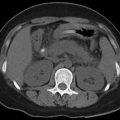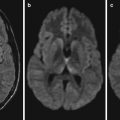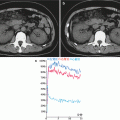© Springer Science+Business Media Dordrecht and People’s Medical Publishing House 2015
Hongjun Li (ed.)Radiology of Infectious Diseases: Volume 110.1007/978-94-017-9882-2_88. Epidemiology of Infectious Diseases
(1)
CT Department, The Second Affiliated Hospital, Harbin Medical University, Harbin, Heilongjiang, China
(2)
Department of Radiology, City Kangan Hospital (Former City Hospital for Infectious Diseases), Mudanjiang, Heilongjiang, China
(3)
Department of Radiology, City Development District Hospital, Yantai, Shandong, China
8.1 Source of Infection
Source of infection refers to both people and animals with pathogens growing and reproducing inside the body and are capable of expelling the pathogens out of the body to invade another organism. It is a cycle with the pathogens growing and reproducing within an organism, followed by being expelled out of the organism to invade another. Some intermedia, such as water, food, and others, can carry pathogens into another susceptible organism. However, these intermedia fail to serve as a place for their long-term survival and reproduction in large quantities rather function as a carrier or transfer station for their spreading. Therefore, the intermedia are not a source of infection. The source of human infectious diseases can be categorized into two groups, namely, humans and animals. It can be further divided into the following four subgroups:
8.1.1 Patients
Patient is an important source of infection. Patients with different infectious diseases show varied infectivity and infective period. Symptoms of patients with acute conditions, such as cough, vomiting, and diarrhea, play facilitating role in the spread of pathogens, while patients with chronic conditions demonstrate long-term effects on their surrounding environment. Patients with slight infectious diseases are in large quantities and tend to be misdiagnosed. Different infectious diseases have been demonstrated to have different epidemiological implications.
8.1.2 Patients with Latent Infection
For some infectious diseases, such as poliomyelitis, the patient with latent infection is an important source of infection.
8.1.3 Carriers of Pathogen
Given the fact that carriers of pathogen show no symptoms but being capable of expelling pathogens, their diagnosis and management present challenges to health-care professionals. However, these carriers play an important role in spreading pathogens. Carriers of chronic pathogens show no symptoms but with long-term discharge of pathogens, which are attached important epidemiological implications in infectious diseases such as typhoid fever and bacillary dysentery. Therefore, carriers of pathogen are also an important source of infection. The importance of pathogen carriers as source of infection is related to the pathogen they discharge, its quantity, period of carrying, vocation of the carrier, personal cleaning habit, sanitary condition the carrier lives, and the susceptibility of their surrounding populations.
8.1.4 Infected Animals
A human can be infected by many diseases found in animals such as brucellosis, rabies, plague, anthrax, and type B encephalitis. Some infectious diseases prevalent in animals such as rabies and plague can be transmitted to humans, leading to serious conditions. Some other infectious diseases like schistosomiasis have their animal hosts as a part of the source of infection. Yet in terms of susceptibility, process of infection, ways of transmission, epidemic process, and pathological changes towards animal pathogens, humans and animals are not in common. The epidemiological implications of the infected animals as the source of infection are different in terms of the quantity of infected animals and chances and ways of human-animal contact. The infectious diseases with animals as the source of infection are mostly zoonotic diseases or natural source diseases.
8.2 Process of Infection
After pathogens invade into the human body through different ways, the process of infection begins. The pathogenicity of the pathogen and the immunity of the human body play decisive role in the survival of the pathogen. The pathogen may be eliminated after its invasion. Otherwise, it stays leading to further tissue impairments, inflammatory reactions, and other pathological changes. In addition, the survival of pathogens is also related to some external factors, including catching a cold, fatigue, medication, and radiotherapy.
8.2.1 Elimination of Pathogen
Pathogens can be eliminated by nonspecific immunological barrier functioning as the first line of defense after they invade into the human body, such as elimination of a small amount of dysentery bacteria and Vibrio cholerae by gastric juice. Meanwhile, pathogens can also be eliminated by specific humoral immunity and cellular immune substances that previously exist in the human body. Specific immunity can be acquired via vaccination or natural infections for active immunity or otherwise via placental barrier from mothers or injection of immunoglobulin for passive immunity.
8.2.2 Asymptomatic Infection
Asymptomatic infection is also known as subclinical infection, which refers to infection that only produces specific immune response after invasion of pathogen, with no or slight tissue damages. Therefore, asymptomatic infection usually has no clinical symptoms, signs, and biochemical changes, which can only be detected immunologically. For most infectious diseases, asymptomatic infection is the most frequently found condition. After the whole course of asymptomatic infection, most patients acquire specific immunity of different degrees, with pathogens eliminated. In some cases, patients with asymptomatic infection develop into pathogen carriers, with the pathogen surviving in their bodies but no symptoms. Such cases are commonly found in patients infected by typhoid bacillus, Shiga bacillus, and hepatitis B virus.
8.2.3 Symptomatic Infection
Symptomatic infection is also known as clinical infection, which refers to the infection that produces both specific immune response and tissue damage due to pathogenicity of the pathogen or allergic reactions of the human body after the invasion of the pathogen. Therefore, such infections are demonstrated by pathological changes and clinical manifestations. For most infectious diseases, symptomatic infection only accounts for a small fraction of all the cases with infectious diseases. However, for some infectious diseases, such as measles and varicella, most patients present symptomatic infection. After the whole course of the symptomatic infection, the pathogens are eliminated and the affected patients acquire a relatively stable immunity against these infectious diseases like measles, hepatitis A, and typhoid fever. These patients are no longer susceptible to such infections. In addition, for the cases of some infectious diseases, such as bacillary dysentery and amebic dysentery, the acquired immunity is weak after the symptomatic infection. These patients are still susceptible to the infections. A small fraction of patients with symptomatic infection may develop into chronic pathogen carriers.
8.2.4 Pathogen Carrying Condition
Based on the types of pathogens, pathogen carriers are accordingly categorized into three types, namely, virus carriers, bacteria carriers, and parasite carriers. Based on the state the patient is in, the carriers can be grouped into carriers in latency, carriers in recovery, and chronic carriers. Generally, carriers with less than 3 months carrying period are referred to as acute carriers; those with more than 3 months carrying period are chronic carriers. Specifically for viral infection of hepatitis B, those with more than 6 months carrying period are referred to as chronic carriers.
Stay updated, free articles. Join our Telegram channel

Full access? Get Clinical Tree






